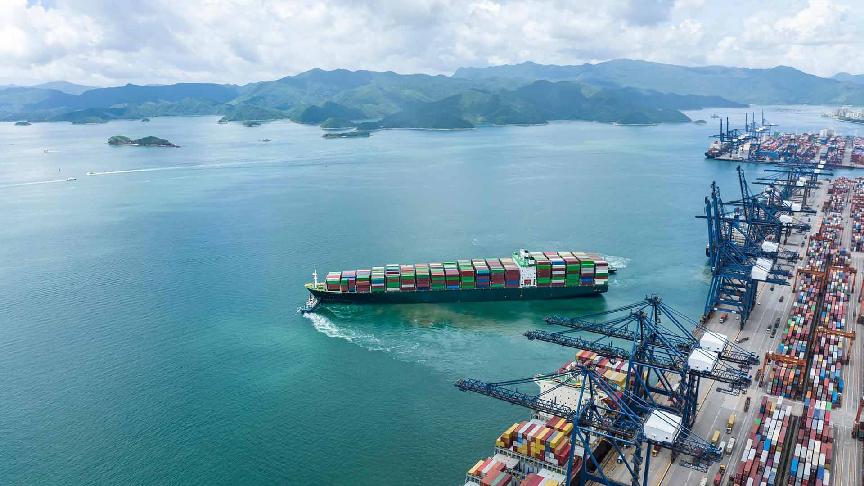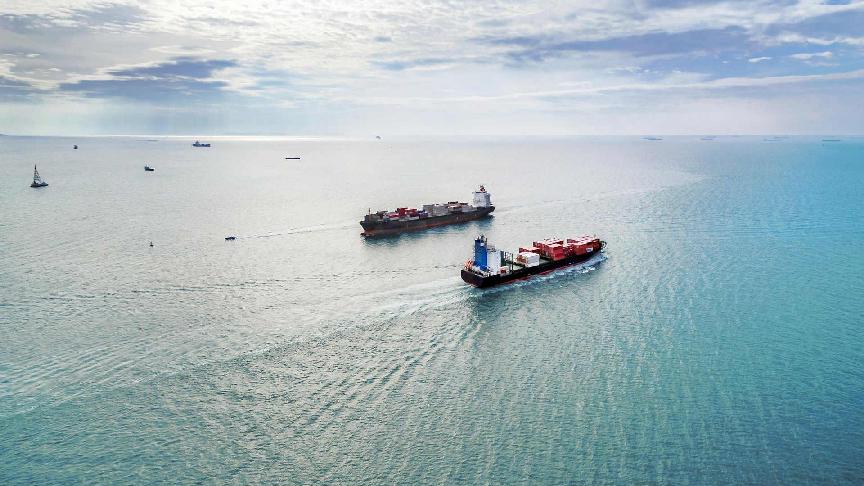26 June 2025 (Lloyd's List) - RED Sea diversions have prompted a recalibration of Saudi Arabian container traffic, with significant box numbers migrating north due to trade restrictions.
The onset of Houthi attacks on commercial shipping in response to the Israel-Gaza conflict, which began in November 2023, saw liner shipping reroute east-west services that previously transited the Suez Canal via the Red Sea around Africa’s Cape of Good Hope.
Fast forward a little over 18 months and this extended journey remains. The additional teu-miles this has created has kept a lid on the fresh liner tonnage hitting the water creating a new wave of overcapacity. Freight rates have also remained elevated.
Container shipping has since settled into this new norm, but for Saudi’s Red Sea ports this impromptu shift in trade meant that the transhipment traffic provided by vessels plying the route almost evaporated overnight.
Lloyd’s List previously reported on how the rerouting had decimated port throughput in the early months of this southerly migration. Full-year figures reveal the extent of the damage.
According to the Saudi Port Authority (Mawani), volumes at King Abdullah Port slumped some 82.7% in 2024 year on year from just under 3m teu to just over 500,000 teu. In 2023, KAP handled 389 vessels above 15,000 teu capacity. Last year just one vessel of this class docked at its berths.
Prior to the Red Sea crisis, KAP had emerged as one of the fastest growing global ports, pulling in a string of services via tenant Mediterranean Shipping Co — through its terminal arm Terminal Investment Ltd — utilising the Saudi facility as a regional transhipment hub, and a host of other carriers drawn by its strategic location.
Although not quite to the same degree as KAP, Jeddah has also seen throughput numbers tumble. In 2024, Saudi’s largest container port witnessed a 33.4% fall in box traffic on the previous year to 3.7m teu.
Unlike KAP, Jeddah’s split between transhipment and gateway cargoes leans heavily towards the latter, as a key ocean entry point for cargoes serving the city of Mecca and the capital Riyadh.
While long-haul east-west services have disappeared, this regional cargo coverage has been compensated by local liner operators, which have picked up the slack by offering feeder services in the north of the Red Sea connecting the region with the Mediterranean via the Suez. The major carriers may have deemed the risk level too high, but other smaller operators have continued to sail through the Bab el Mandeb, such as Saudi newcomer Folk Maritime, which over the past year has launched a direct link into Jeddah from the Indian subcontinent.
These feeder-based strategies led to a sharp rise in smaller ships calling Jeddah in the aftermath of Houthi strikes, as ultra-large tonnage exited the scene.
Vessel numbers tracked by Lloyd’s List Intelligence showed a 22% increase last year in ships below calling in Jeddah. Only 11 ships above 15,000 teu docked in Jeddah in 2024 compared to as many as 157 in 2023.
KAP and Jeddah may have suffered significantly by the southerly migration of lines round southern Africa, but on Saudi Arabia’s eastern Middle East Gulf coast the port of Dammam has become increasingly pivotal for the country’s gateway cargoes. As it often does, trade finds a way.
In response to Red Sea diversions, the Saudi Ports Authority was quick to fast track capacity enhancing measures and infrastructural upgrades in Dammam as well as in its fellow smaller gulf port Jubail, a move it said ensured of “uninterrupted support for shipping lines, thereby preventing any negative impact on local cargo movement, whether for imports or exports.”
Last year, Dammam witnessed a 42.7% surge in trade as lines shifted services to the opposite side of the country. Throughput levels reached 3.3m teu in 2024, or just a few hundred thousand boxes less than Jeddah.
While Dammam has helped to ensure that Saudi-bound cargoes have continued to flow unabated, the country’s Red Sea ports will still be hoping that the dearth of ultra-large tonnage in the region proves only a short-term trend, particularly KAP, which relies on and was built for the transhipment trade these vessels enable.
Over the past few months, several carriers have been testing the water with ad hoc Red Sea sailings. Most notable has been CMA CGM.
Earlier this month, the Marseille-based carrier set sail through the Suez with CMA CGM Osiris (IMO: 9882504), representing the biggest containership since March last year on its journey from Singapore to Alexandria, Egypt.
However, the likelihood of a Red Sea return in the near term was dealt a significant blow only a few days after the landmark voyage with the start of the Israel-Iran conflict. This has only elevated the risk factor in the region once more and it appears unlikely carriers will dare risk the safety of vessels and their crew anytime soon.
Additional reporting by Bridget Diakun







